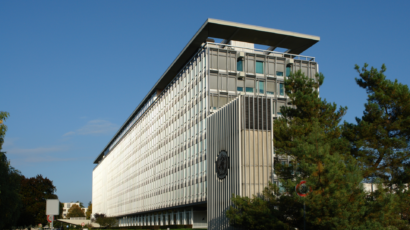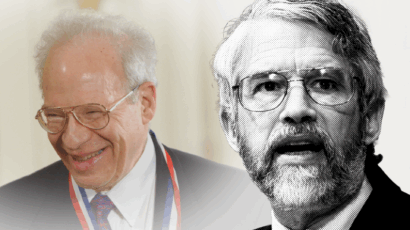The abilities—and limits—of North Korean early warning
By Terence Roehrig | November 27, 2017
At 2:00 a.m. on a quiet night, a North Korean navy vessel on routine patrol moves slowly north along the eastern coast of North Korea. The watch officer on the ship is the first to notice signs: a barely audible rumble of engines from the north and small objects glinting in the moonlight as they streak toward North Korean shores. By the time the sound of the engines fades, it is clear to all on board that 20 to 30 cruise missiles are headed toward targets in North Korea.
Immediately, the ship contacts East Sea Fleet headquarters, which passes word to national leadership in Pyongyang. The source of the missiles can’t be known for sure, but few doubt their origin: US destroyers well out in the Sea of Japan have launched Tomahawk cruise missiles in response to North Korea’s latest nuclear weapon test. The missiles, traveling 100 to 150 feet above the water at speeds of more than 800 kilometers per hour, will reach their targets in 10 to 15 minutes.
Though this scenario is fiction—and hopefully will stay that way—it raises some crucial questions about North Korea’s early warning systems. How effectively can they detect attacks? How much warning will they provide the North Korean leadership? How will the capabilities and condition of Pyongyang’s early warning systems affect the nation’s response to military action?
If South Korea or the United States attacked the north, the amount of warning Pyongyang received would depend on the specific military action. A large-scale military operation would be relatively easy to detect. But a small-scale strike such as a cruise missile attack would be much more difficult—and could force North Korean leaders to make difficult decisions based on very little advance warning.
What they’ve got. To detect a limited, short-notice strike, the North Korean military has a few air defense early warning systems that would provide some degree of notice. These include the P-14 Tall King radar, a system developed by the Soviet Union in the early 1960s. The P-14, with a range of approximately 600 kilometers, is linked to North Korean air defense systems. These radars are deployed near the demilitarized zone (DMZ), and also near Pyongyang, to work in tandem with the north’s longest-range surface-to-air missile, the SA-5. North Korea has other radars, with ranges of 200 to 300 kilometers, and though these radars are old, they may be more capable than many think. In addition, North Korea may have recently added some phased array radars, obtained from Iran, to its early warning system. Together, the air defense system—consisting of a large number of radar air defense units, ground-controlled interception bases, and early warning bases spread across North Korea—allows the Kim Jong-un regime to monitor the entire Korean Peninsula. Additionally, Pyongyang has a variety of interceptors, including the SA-2, SA-3, and KN-06, as well as a plethora of anti-aircraft artillery and some combat aircraft, together generating considerable capability—and giving North Korea what the Pentagon describes as “a dense, overlapping air defense system.”
To increase the detection accuracy of its radar air defense units and to reduce their response times, North Korea is creating (according to South Korea’s Ministry of National Defense) an automated command and control system for air defense. Though aircraft without stealth technology wouldn’t be able to evade detection by North Korean air defenses upgraded in this way, US planes—the B-2, F-22, and F-35—have the stealth technology to penetrate North Korean air space and deliver conventional munitions, nuclear-tipped cruise missiles, and gravity bombs. Nominal upgrades (including but not limited to automated command and control) will not provide North Korean leaders with much advance warning of a wave of incoming missiles or aircraft. This is especially so if radars became targets of allied jamming operations—electronic warfare—during a major conflict. If radars were jammed, it could take a long time for messages to travel between local commanders and central authority.
North Korea can also utilize signals intelligence to determine if any anomalies in South Korean military communications indicate a coming attack. Pyongyang actively monitors the communication channels along the DMZ and, based on years of observation, understands what a normal baseline of communication is. If a military strike were imminent, communication patterns among South Korean officials would likely change. The same is true of the South Korean and US militaries. Any unusual communication activity, as would likely precede an attack, would be noticed by North Korean observers and provide an indication that something was afoot.
Similarly, North Korean observation posts along the DMZ—or along a coastal defense network that includes surveillance radar installations at more than 40 locations—might detect unusual activity by South Korean or US forces, or infiltration efforts by special forces. North Korean patrol vessels might provide early warning, as noted in the scenario above, and fishing trawlers might also spot activity that would be relayed to military authorities. Pyongyang’s indigenous capabilities in unmanned aerial vehicles are growing, which provides another possible source of alert. According to Seoul, the North has been producing and deploying these assets for reconnaissance and to photograph border areas.
While North Korea’s ground-based systems, including air and coastal defense radar, provide limited detection capabilities against non-stealth (and some naval) assets, Pyongyang lacks robust sea-based offshore and space-based sensors. Absent these assets, North Korea lacks a multi-layered early warning system to alert its leadership in Pyongyang to a broad array of attack scenarios, including highly sophisticated incoming salvos of US conventional weapons delivered by stealth B-2 and F-22 aircraft or ballistic missiles. The North Korean leadership will not be able to determine the origin of such an attack or what has been hit—possibly for hours, especially if the military’s command and control system is severely degraded. Given such uncertainty, North Korea’s window of opportunity to swiftly launch a counterattack could be limited. If Pyongyang feels compelled to respond regardless, it might order a disproportionate counterattack without a clear battle damage assessment or a full understanding of the scope of the assault. The counterattack would instead be based on an assumption that the missile strike originated from the United States or South Korea.
In September, the United States flew two B-1B bombers, along with F-15 fighter escorts, on a path 300 to 350 kilometers away from North Korea’s east coast. South Korean intelligence later reported to a legislative committee that North Korea had not responded to the flight and may have failed to detect it at all. The flight took place around midnight—and speculation included the possibilities that North Korea simply was not expecting the flight and missed it or that its radar could not be activated due to a power failure. It is also possible that North Korean air defense units did observe the flight, but officials chose not to activate the air defense system for fear of revealing vulnerabilities or operational plans. While the true explanation remains a mystery, the incident raises further questions about the effectiveness of North Korea’s early warning system.
Too big to hide. If the United States and South Korea were preparing to conduct major combat operations, the preparations would be obvious. For North Korea, the strategic warning challenge would be easy to meet. The security situation would already have deteriorated; events would already have raised tensions to unprecedented levels. Both sides would likely be on high alert, maintaining a careful watch with all available assets.
Moreover, any US and South Korean effort to cross the DMZ would be very difficult. Many assets would have to be in place before allied forces could move north. The United States has only 28,500 troops in South Korea (composed of some army units and three combat air wings). South Korea has a large, capable military—but major military actions would require a significant increase in US forces and a logistical push in the region, as well as the movement of South Korean forces to prepare for large-scale operations. These activities would be difficult to conceal, particularly in a country of South Korea’s moderate size—not least because Pyongyang has human intelligence assets in the south, as well as third-party sympathizers who would pass along detailed information on military movements.
Prior to major operations, the United States would likely conduct a massive noncombatant evacuation operation, removing more than 200,000 US citizens from South Korea. This operation would certainly provide North Korean leadership early warning of South Korean-US intent—such events would be covered extensively by local and international media outlets, so North Korean leaders could simply turn on CNN for information and updates. Finally, though Beijing and Moscow do not seem to maintain formal military information-sharing agreements with Pyongyang, they might be willing to pass on information in a crisis, depending on the circumstances.
US nuclear attack? Pyongyang’s task in interpreting warning indicators becomes even more complex when one introduces the possibility that the United States might launch a nuclear strike.
To be sure, the United States is highly unlikely ever to use nuclear weapons against North Korea, particularly in a first strike. Crossing the nuclear threshold would present serious strategic, operational, and moral problems. Moreover, the United States could pursue many conventional options whose military and strategic effects would be similar to those of nuclear weapons, making conventional arms the more likely choice.
Even if US leaders opted to use nuclear weapons, they would not rely on intercontinental ballistic missiles or submarine-launched ballistic missiles. The warheads on these weapons are too powerful and their use would be viewed as disproportionate. However, if Washington did choose to go this route, North Korea lacks the satellite capability to detect launches of these weapons. With the projectiles traveling at 24,000 kilometers per hour, North Korea would have only minutes of warning before the incoming warheads reached their targets.
Instead, the United States would more likely rely on less powerful, nuclear-tipped cruise missiles launched by B-52 or B-2 bombers from well outside North Korean airspace—or on nuclear bombs carried by stealth aircraft. Regardless of whether these weapon systems delivered nuclear or conventional warheads, North Korea would face similar detection problems.
More important, if US leaders were considering the use of nuclear weapons, North Korea would have already crossed a very serious red line. The peninsula would be in crisis and on high alert. Washington and Seoul would understand they were headed down a very dangerous road. It is certain that actions such as troop movements and noncombatant evacuation operations would precede a US nuclear strike, providing strategic warning to the north. However, there might be little North Korea could do in response to a nuclear strike other than to initiate its civil defense plans.
In any event, if a crisis on the peninsula grew to the point that large-scale military actions were imminent, the warning signs would be clear. As US forces executed a noncombatant evacuation operation, North Korea would have ample time to mobilize its military assets, including chemical and nuclear weapons, and would place its military on a war footing. Pyongyang would likely view major combat operations as the opening round of attempted regime change and would respond accordingly. North Korea might escalate quickly to the use of chemical or nuclear weapons, in hopes of de-escalating the crisis and saving the regime. North Korea would spare nothing in the face of an existential threat for which it had sufficient warning to prepare.
The more difficult challenge for Pyongyang would come if South Korea and the United States launched a small-scale operation. Whether faced with a cruise missile attack, insertion of a special operations team, or an air raid, North Korean leaders would likely have a difficult time detecting such an action and determining its scale until minutes before the attack struck home. They would also have to decide if the attack were simply a one-time retaliatory strike, a decapitation strike intended to end Kim family rule, or the initial salvo of a large-scale assault to annihilate North Korea. This assessment would in large measure determine Kim Jong-un’s response. Millions of lives would hang in the balance. Moreover, if South Korea and the United States sought to conceal a small-scale strike against the north, hoping not to send signals that would tip their hand, they would leave themselves woefully unprepared for North Korea’s potential response.
The use of military force against North Korea raises a host of disturbing possibilities. How these possibilities play out would, in many respects, depend on how North Korea assessed information derived from its early warning system. North Korean leaders could have to decide, for example, if a cruise missile strike were the beginning of an attempt at regime change or a one-time act of retaliation—and whether the missiles were armed with conventional or nuclear warheads. If North Korean leaders had any inkling that their existence was on the line, the response would be deadly, and the fate of Northeast Asia could be determined in a matter of minutes. Let’s hope we never have to test how good Pyongyang’s early warning system is.
The views expressed in this report are the author’s alone and do not represent the official position of the Department of the Navy, the Department of Defense, or the US government.
Together, we make the world safer.
The Bulletin elevates expert voices above the noise. But as an independent nonprofit organization, our operations depend on the support of readers like you. Help us continue to deliver quality journalism that holds leaders accountable. Your support of our work at any level is important. In return, we promise our coverage will be understandable, influential, vigilant, solution-oriented, and fair-minded. Together we can make a difference.
Topics: Analysis, Nuclear Weapons















